#Mazda Savanna Wagon
Text
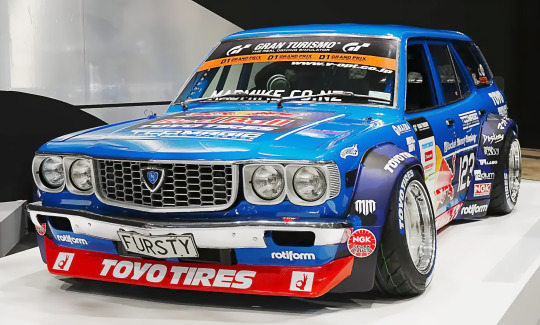
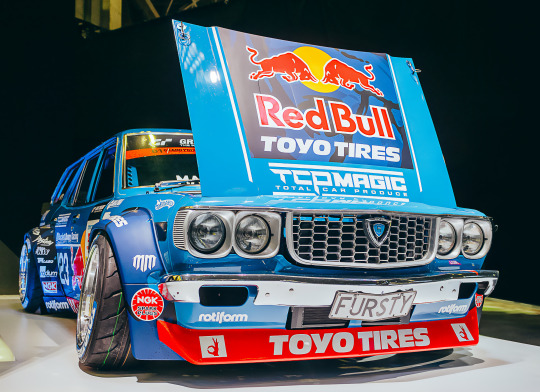

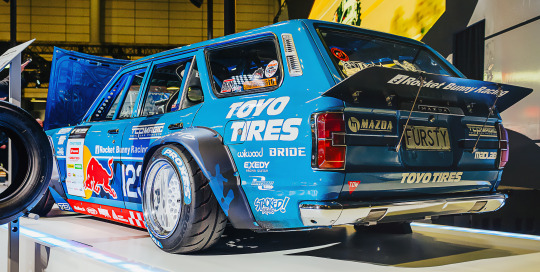
Mad Mike’s FURSTY by TCP Magic, 2024. Presented at the Tokyo Auto Salon. Kiwi drifter Mike Whiddett began his career with this Mazda Savanna Wagon but sold it to fund his FD RX-7 drift car. Fast forward to October last year when Mike was able to buy the Mazda Wagon back and pass it onto TCP Magic. They have fitted a 26B 4-rotor NA engine with HGT sequential transmission and Winters Performance quick-change differential, there's also a Rocket Bunny Pandem wide-body kit and custom Rotiform wheels.
original photographs by Toby Thyer/Speedhunters
#Mazda#Mazda Savanna#Mazda Savanna Wagon#Mazda RX-3#TCP Magic#FURSTY#drift car#4 rotor Wankel#rotary engine#4 rotor#custom car#Tokyo Auto Salon#Mazda Rotary#Mad Mike Whiddett#26B Rotary
182 notes
·
View notes
Text
Mazda
В субботу я забрал свой новый автомобиль. Выбор мой пал на Mazda 6 не случайно. Помимо субъективны�� ощущений от вождения этой машины, меня так же подкупила история компании. Поехали знакомиться.
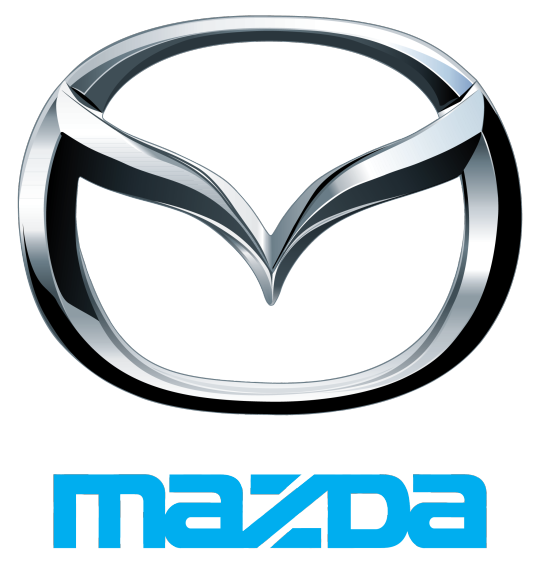
Компания, история которой началась ни много ни мало – с пробки. Именно строительными материалами из пробкового дерева и занималась компания, основанная Джуджиро Мацуда (Jujiro Matsuda) в 1920 году.
Мацуда, родившийся в 1875 году двенадцатым сыном рыбака в префектуре Хиросима, в 20 лет открыл собственную кузню, но вскоре она закрылась из-за убытков. Через 11 лет он снова открыл кузню и даже получил патент на насос для закачки воздуха, но уже через несколько лет компания снова закрылась. После еще нескольких попыток открыть свое дело Мацуда в 1920 году вместе с группой инвесторов скупил разорившуюся компанию Abemaki, находившуюся в Хиросиме и занимавшуюся пробковым деревом. Ее переименовали в Toyo Cork Kogyo и в следующем году Мацуда стал ее президентом. Компания на тот момент никакого отношения к автомобилям не имела и выпускала вышеупомянутые стройматериалы из пробки. Это занятие позволило заложить финансовый фундамент для дальнейшей деятельности. В 1927 году из названия компании выпало слово “cork” – пробка, и компания стала носить имя Toyo Kogyo., Ltd., что было следствием перехода к промышленному производству. Выпустив в 1920-х годах небольшую тестовую партию мотоциклов, в 1929 году компания перешла к производству станков. В 1930 году один из выпущенных компанией мотоциклов даже выиграл гонку.
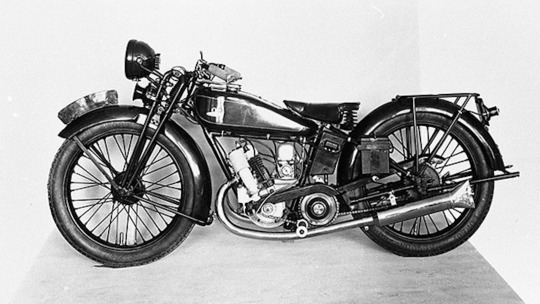
Трехколесный грузовичок.
В 1931 году компания начала выпускать автомобили в чисто японском стиле – трехколесные грузовички c двигателями объемом 500 куб.см. В качестве торговой марки для обозначения этих машин было выбрано слово Mazda – имя зороастрийского верховного бога света, которое к тому же было очень близко по звучанию к имени основателя компании – Мацуда. А в 1932 году начался экспорт грузовиков Mazda в Китай. До того, как началась Вторая мировая война, компания создала несколько концептов легковых автомобилей, но в серийное производство ни один из них пойти не успел.

Mazda R360.
После войны и атомного взрыва в Хиросиме завод Toyo Kogyo, к счастью, был разрушен лишь меньше чем наполовину, и уже в 1950 году компания начала выпускать трехколесные грузовики с двигателем 1157 куб.см Type CT, компактные пожарные машины и обычные грузовики. В 1952 году умер Джуджиро Мацуда; за год до этого президентом компании стал его сын Тенуджи. Компания начала выпускать легковые автомобили только в 1960 году, когда уже начался рост благосостояния рядовых японцев. Первой моделью стала R360 – 2-дверная городская машина, оснащенная 2-цилиндровым двигателем объемом 356 куб.см. Она не отличалась особыми изысками, зато была недорогой и удобной.
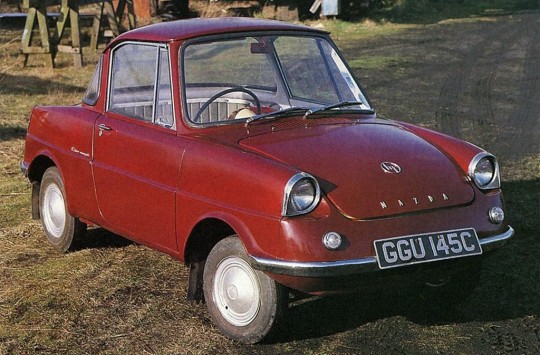
Wankel-Yamamoto. Роторный двигатель.
Кроме этого, в 1960 году случился ряд событий, сыгравших в дальнейшей истории Mazda большую роль. Компанию посетил представитель немецкой компании NSU доктор Хаас, а президент Мацуда нанес в Германию ответный визит, и было заключено предварительное соглашение о сотрудничестве с NSU в области разработки и производства роторных двигателей Ванкеля. Официальным началом этого сотрудничества считается 1961 год, когда соглашение получило одобрение японского правительства. В том же году вышел компактный пикап Mazda Proceed (B-series 1500).
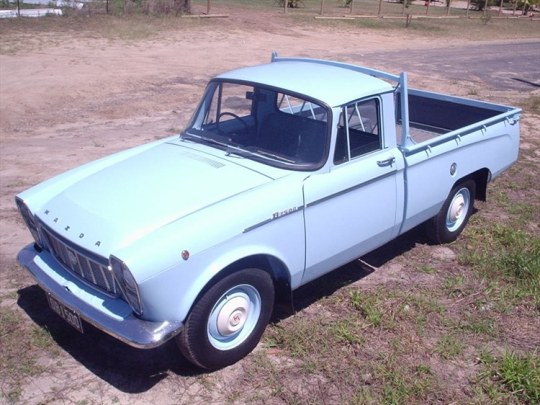
Через год модельный ряд увеличился – появилась Carol, модель в двух вариантах: 2-дверная Carol-360 и 4-дверный седан Carol-600. Своим дизайном Carol, как и многие ранние японские автомобили, повторяла модель Ford Anglia.
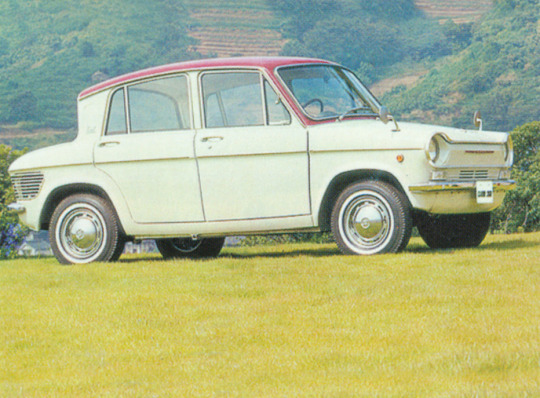
Уже в 1963 году общее количество выпущенных автомобилей достигло 1 миллиона, и в Токио был показан первый произведенный компанией роторный двигатель. В 1964 году началась история модели Familia – было представлено ее первое поколение. Модель Mazda 800cc Station Wagon начинает импортироваться в Новую Зеландию.
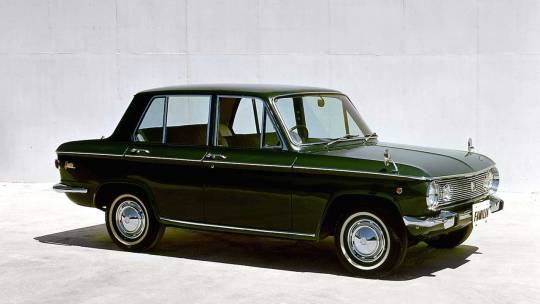
Построив в 1965 году испытательный полигон Миоши, Mazda начала техническое сотрудничество с английской компанией Perkins Services N.V. в области дизельных двигателей. 1967 стал годом дебюта модели Cosmo Sports (110S) – первой модели Mazda с роторным двигателем. В том же году начался полномасштабный экспорт на европейский рынок.
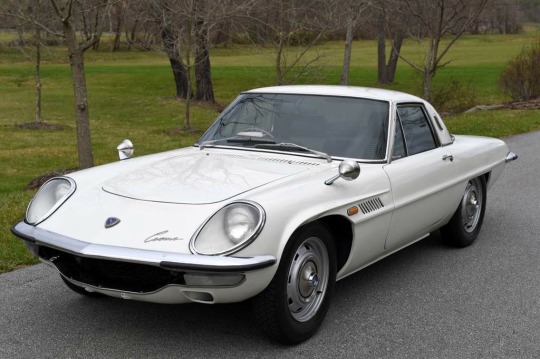
В следующие годы началось производство одной модели с роторным двигателем за другой: 1968 год – Familia Rotary Coupe (R100), 1969 – R100 Rotary SS Sedan, 1970 – Capella RX-2. К 1970 году было произведено 100 000 автомобилей с роторным двигателем. Кроме этого, в 1969 году Mazda впервые вступила в сотрудничество с Ford – в области совместного производства автоматических трансмиссий, открыла сборочный завод в Новой Зеландии, а в 1970 году начался экспорт автомобилей в США.
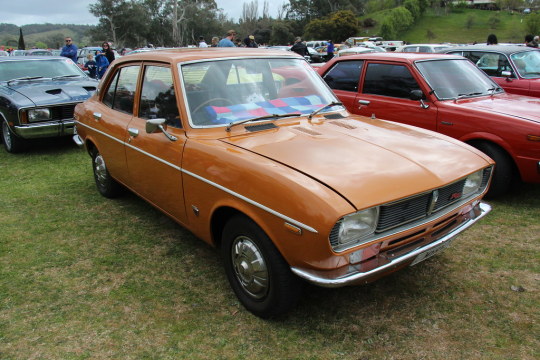
Mazda Savanna RX-7
1970-е годы открылись еще одной моделью с ротором – Savanna (RX-3), выпущенной в 1971 году.
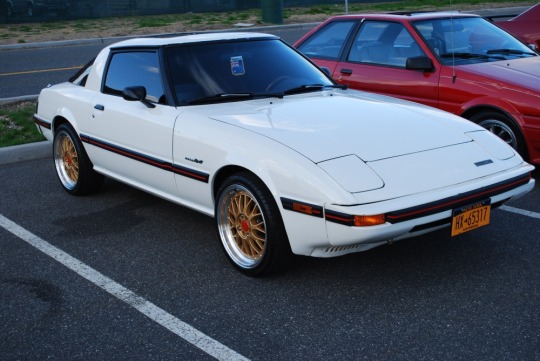
В следующем, 1972 году, вышла Luce (RX-4). Компания преодолела рубеж в 5 миллионов произведенных автомобилей, а в 1973 экспорт достиг 1 миллиона автомобилей. Автомобили с роторным двигателем продавались достаточно успешно, но разразившийся в 1974 году нефтяной кризис нанес им порядочный ущерб – роторы потребляли больше топлива и масла, чем другие двигатели. Но в 1978 году, был выпущен миллионный автомобиль с роторно-поршневым двигателем. В 1979 году Род Миллен уехал в США и стал там чемпионом по ралли, выиграв гонки на автомобиле Mazda RX-7 два года подряд. В то же время Ford Motor приобрел 25% акций Toyo Kogyo.
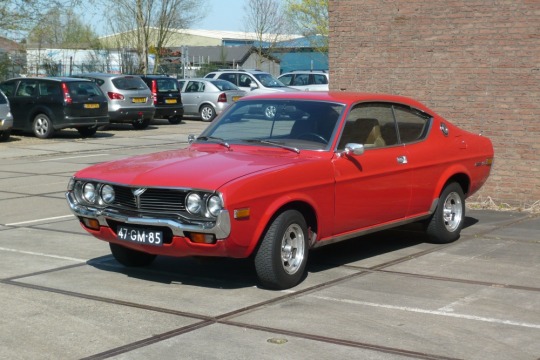
В 1980 году Mazda Familia стала автомобилем года в Японии. Автомобильная марка Mazda в это время уже заняла твердые позиции на мировом рынке. В США и Европе в 1981 году открылись ее представительства, а в 1982 году автомобилем года в Японии стала Capella. Она же в 1983 году была признана лучшим импортным автомобилем в журнале Motor Trend и получила множество престижных зарубежных наград. На испытательном полигоне Миоши была построена лаборатория аэродинамических испытаний; появилось новое семейство микроавтобусов – Bongo/Bongo Brawny. Mazda вступает в финансовый союз с Kia Motors, купив 8% ее активов. А в 1984 году компанию переименовали в Mazda Motor Corporation. В 1986 году журнал Motor Trend назвал Savanna RX-7 импортным автомобилем года; тогда же эта модель установила национальный рекорд скорости в Бонневиле – 383.724 км/ч в классе SCTA’s C/Grand Touring. В 1987 году, в честь 20-летия роторного двигателя Mazda, вышла Savanna RX-7 в кузове кабриолет. В Мичигане начинается производство автомобилей на новом заводе – Mazda Motor Manufacturing Corporation (MMUC); открывается новый исследовательский центр в Йокогаме; выходит произведенная на заводе Mazda модель Ford Festiva (121). В 1988 году в США открываются Mazda Motor of America Inc. и Mazda Research and Development of North America, Inc. (MRA) – для объединения всех связанных с Америкой операций. На американском рынке появляется модель MPV. Mazda разрабатывает новую технологию окрашивания – покрытие Hi-Reflex. На автосалоне 1989 года в Чикаго Mazda представила родстер MX-5 Miata. Благодаря удачному дизайну и невысокой цене эта модель завоевала огромную популярность в США и других странах.
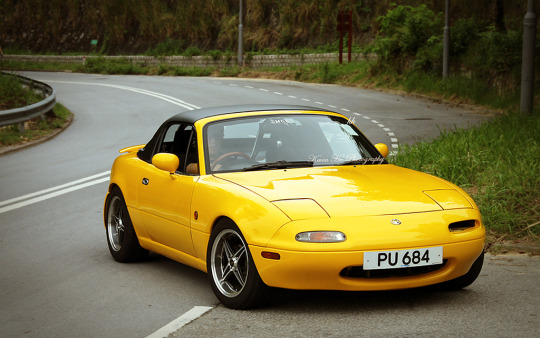
На автосалоне же в Токио была представлена другая модель – Autozam Carol. Mazda начала импортировать в Японию Citroen BX, а в следующем, 1990 году - Citroen AX.

В 1990 году в Японии появились такие модели, как MPV

Eunos Cosmo (оснащенная автомобильной навигационной системой)
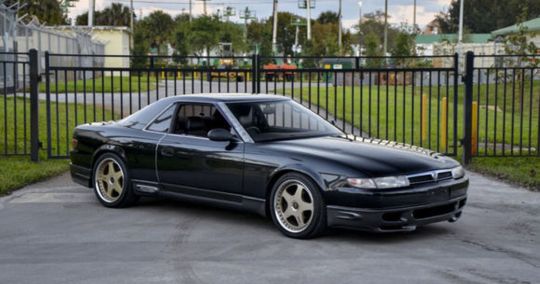
Autozam Revue (121).
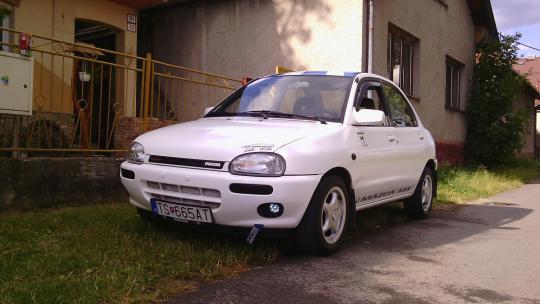
MX5 стала автомобилем года в Новой Зеландии, общее количество произведенных автомобилей достигло 25 миллионов (из них 1 миллион экземпляров модели RX-7), открылось представительство в Германии. 1991 год – в Японии выходит седан класса "люкс" Sentia (929)
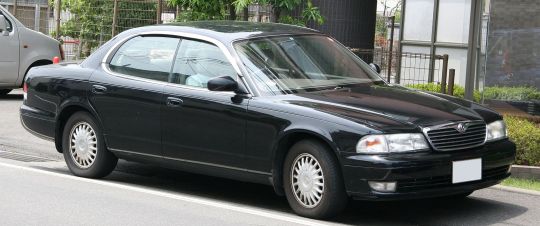
Автомобиль Mazda 787B выигрывает 24-часовую гонку Le Mans (это была первая победа в этой гонке, одержанная автомобилем японского производства и единственная победа автомобиля с роторным двигателем)

На 29-ом автосалоне в Токио представлен концепт HR-X с роторным двигателем, работающим на водороде
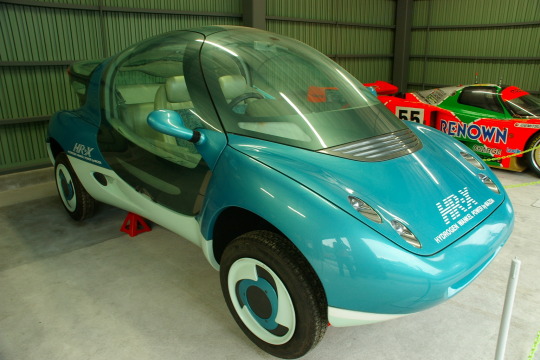
1992 год – продается 300-тысячный автомобиль MX-5 в мире;
RX-7 выигрывает 24-часовую гонку в Дайтоне в классе GTU 11 год подряд;
Mazda Motor Manufacturing Corporation в Мичигане, США, становится компанией AutoAlliance International, Inc. (AAI) с равными долями в ней Mazda и Ford;
Через канал продаж в Японии Eunos представлена новая модель – MX-6, а также эксклюзивно для внутреннего японского рынка через канал продаж Autozam начинает выпускаться модель AZ-1, двухместный микромобиль, и модель Eunos 500 (Xedos 6). В то же время бурно развивается экологическое направление деятельности компании: принимается "Глобальная экологическая хартия Mazda", разрабатывается новый нейтрализующий катализатор, который восстанавливает масло из всех типов пластика, а также первый в мире пластиковый композит многократной переработки. В Германии и Японии открываются экспериментальные заводы по сборке и вторичному использованию пластмассовых бамперов. В 1993 году Mazda выходит на филиппинский рынок легковых автомобилей. С Ford заключается долгосрочное соглашение с целью улучшения конкурентоспособности автомобилей. На автосалоне во Франкфурте выставляются HR-X2 и прототип модели Eunos 800 (Xedos 9), вызвавший большой интерес. А в Японии появилась новая спортивная компактная модель – Mazda Lantis.
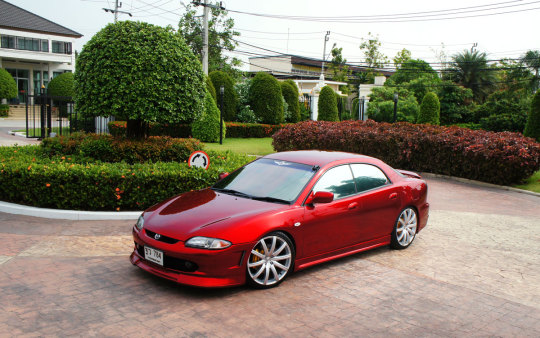
Через год, в 1994 году, открывается музей Mazda, разрабатывается грузовик, работающий на сжатом газе, а также электромобиль на базе фургона E-класса. Во Флориде и в Китае открываются тренировочные центры Mazda, появляется новая модель – минивэн AZ Wagon, и Mazda первой среди японских автопроизводителей получает экологический сертификат ISO 9002.
В 1995 году общее количество выпущенных автомобилей модели Familia (323) в Японии достигает 10 миллионов при общем количестве выпущенных автомобилей Mazda в 30 миллионов. Открывается представительство в Португалии. Mazda начинает тестирование водородных автомобилей на дорогах общего пользования; начинает продаваться новая модель – Bongo Friendee.
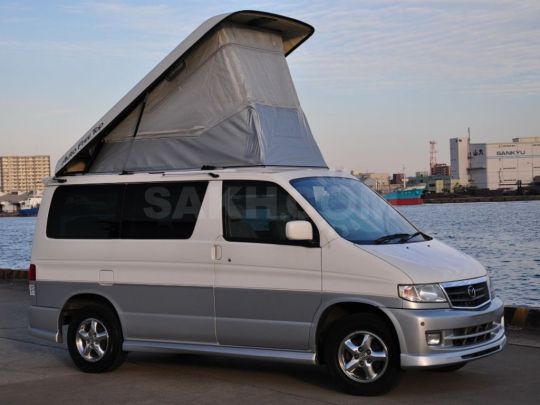
В следующем, 1996 году, процент доли Ford увеличился с 25% до 33,4%, президентом компании стал Генри Уоллис, в Японии начала продаваться новая модель – Demio, и в том же году начались ее продажи за рубежом, и она к тому же стала автомобилем года в Японии.
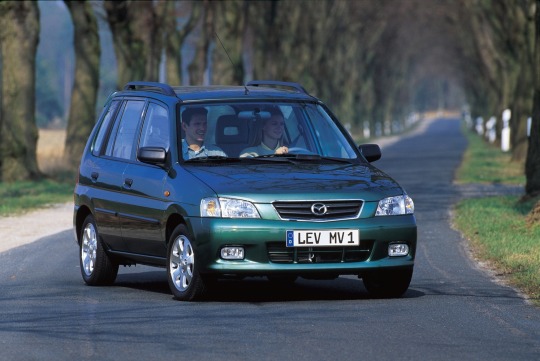
На европейском рынке начала продаваться модель 121, произведенная на заводах Ford. Mazda запустила систему “Mazda Digital Innovation (MDI)” – информационную технологию, позволяющую радикально обновить все стадии производства автомобилей – от планирования до сборки. Mazda получила сертификат ISO 9001, снова первой среди японских автопроизводителей. В 1997 году изменился логотип компании на нынешний; в компании вводится новая система поощрения персонала; возобновляется экспорт продукции на Тайвань; президентом компании становится Джеймс Миллер; разрабатывается модель Demio FCEV, работающая на топливных ячейках.
В следующем, 1998 году Mazda вступила в альянс Ford/Daimler-Benz/Ballard с целью разработки технологии топливных ячеек, открывает консультативный центр по трудоустройству женщин, усиливает свое присутствие на европейском рынке, начинает производство маленьких турбодизельных двигателей с непосредственным впрыском.
В 1999 году модель MX-5 отметила свое 10-летие, было достигнуто соглашение с Mitsubishi – Mazda начала поставлять Mitsubishi небольшие коммерческие автомобили. В производство была запущены новые модели – Tribute и Premacy. Помимо этого, был сделан такой шаг, как улучшение условий работы для женщин. Президент компании снова поменялся – им стал Марк Филдс.
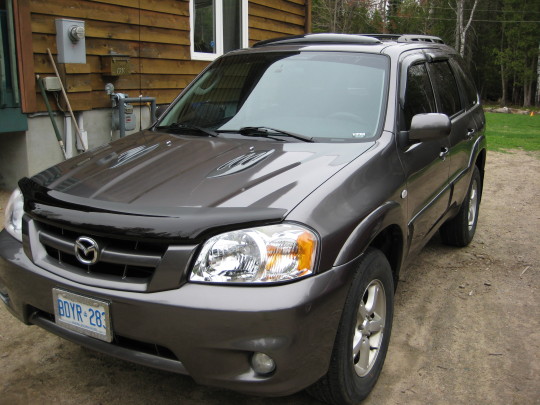
2000 год ознаменовался выходом Mazda в сферу электронной коммерции – был основан “e-Business Enabling Office” и предприняты шаги по улучшению взаимодействия с клиентами через Интернет. Mazda Roadster, которая в этом году получила совершенно новый дизайн кузова, попала в книгу рекордов Гиннесса. На автосалоне в Детройте был показан концепт RX-Evolve, предшественник ныне выпускаемой модели RX-8.
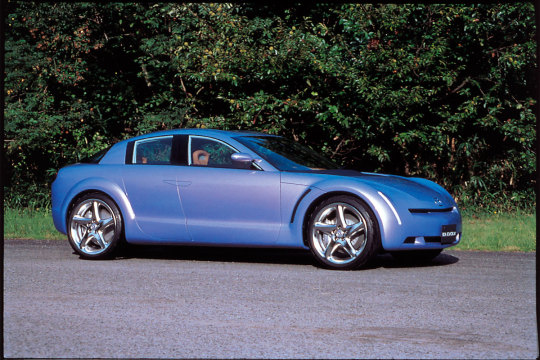
Mazda приняла участие в совместном с Daimler Chrysler Japan Holding и Nippon Mitsubishi Oil проекте испытания автомобилей на топливных ячейках.
2001 год – на автосалоне в Токио демонстрируется новая Atenza и предварительная версия RX-8 с роторным двигателем Renesis; завод Ford в Валенсии, Испания, выбирается как европейская база для производства компактных ав��омобилей Mazda; Roadster получает главный приз "Auto Color Award 2001"; Mazda расширяет сферы применения материалов из переработанных пластиковых бамперов. Многие модели Mazda в этом году получили дополнительные, "спортивные" модификации. В 2002 году компания открыла собственные ясли и выпустила новую модификацию модели MPV – Sports F, разработанную женщинами, приняла участие в праздновании 100-летнего юбилея изобретателя роторного двигателя – Ванкеля, вышла на автомобильный рынок Китая с моделью 323, разработала первую в мире технологию экологически благоприятного покрытия, развивала программу по подбору персонала.
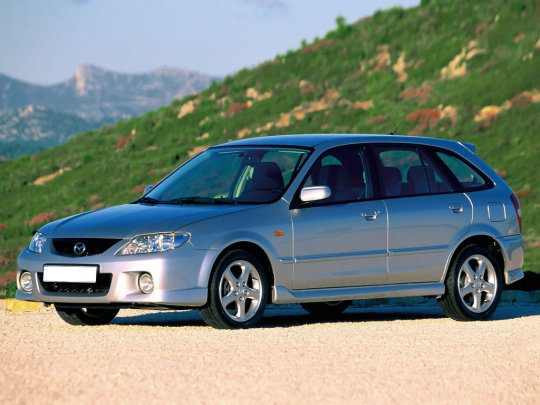
В настоящее время Mazda отказалась от выпуска люксовых автомобилей (которые в ее модельном ряду были представлены седаном Millenia).
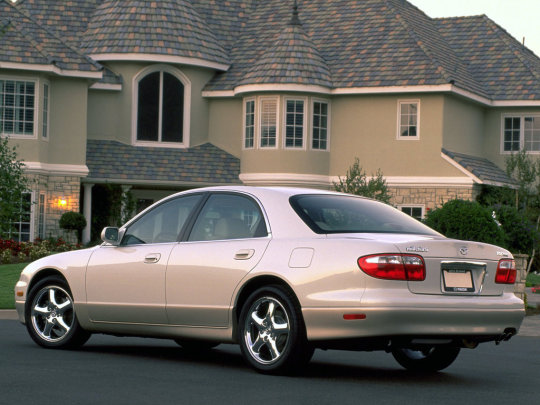
Основной упор в производстве делается на легковые автомобили малого и среднего класса, а также спортивные модели, что руководство Mazda считает более перспективным и эффективным для дальнейшего развития компании. В гамме спортивных моделей на смену всемирно известной модели RX-7 пришла RX-8. В вопросах стратегии развития и продаж компания тесно взаимодействует с Ford, хотя в производственную сферу Ford не вмешивается. Mazda по праву может считаться мировым автопроизводителем – ее сборочные заводы в 21 стране позволяют ей экспортировать свои автомобили в 120 государ��тв мира.
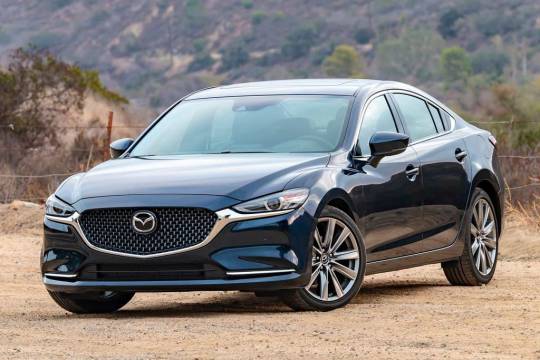
0 notes
Photo
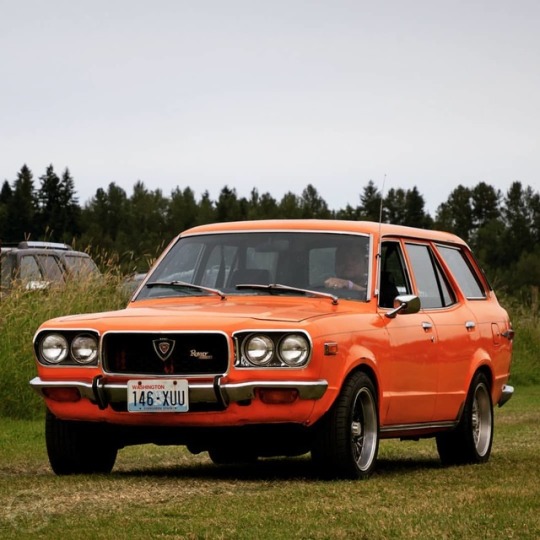
Mazda’s first U.S. dealers, in Oregon and Washington, opened in April of 1970. Toyo Kogyo sold just ~2,300 cars in America that first year, but Mazda soon began to register on the radar of U.S. customers thanks to its famous rotary engines, licensed from Felix Wankel and perfected by engineer Kenichi Yamamoto. The first official U.S. #Mazda rotary was the R100 and the first to get widespread notice was the RX-2 (Capella). But the most popular of Mazda’s 1970s rotary cars arrived in mid-1972: the RX-3. - The RX-3, called the Savanna at home, was a rotary version of the Grand Familia - a new model to slot between the old Familia (“Familia Presto” after 1973) and the Capella (RX-2). Unlike the older Familia/R100, the Savanna was marketed as an entirely separate entity in Japan - and it was a performer. Smaller, lighter, and wider in track than the already quite good Capella/RX-2, the Savanna coupes quickly became competition favorites. But the cars were meant for mainstream buyers, and so there was also a sedan and a rotary-powered family wagon, powered in Japan by the smaller 10A rotary. - In the U.S., the piston-engined Grand Familia was the 808, the Savanna, the RX-3. U.S. cars used only the larger 12A. Rotary Mazdas in the U.S. cost more than comparable Datsuns and Toyotas, but the performance was sports-car stuff, and the RX-3 coupe was the best seller - the sedan lasted just one year, 1973, though the wagon was on sale from 1973-76 and was quite popular. U.S. Mazda sales it ~117,000 in 1973, but by the end of the year a perfect storm had roiled Mazda’s future. - It began with the Nixon shock, which caused currencies to fluctuate, raising the prices of already “pricey for a Japanese car” Mazdas. But it continued with consumer complaints about oil seals, and then came OPEC. Rotary Mazdas were fast, but also got 11mpg, making them seem especially thirsty to U.S. buyers, to whom smaller cars meant “economy.” Yamamoto’s team improved the engines and the RX-3 was still a great driver, sales fell off a cliff and Mazda was in the wilderness for a few years until corporate changes and new products - specifically the piston-engined Familia/GLC of 1977 - arrived. https://www.instagram.com/p/B3HySBYF6Wp/?igshid=gtntnau0rzdk
0 notes
Text
A Brief History of the Mazda RX-3
Introduction
The Mazda RX-3 “Savanna” was a paradox of a car. Fledgling Japanese car maker Mazda built a pretty typical for the period small passenger car and dropped a twin rotor Wankel engine into it.
This had the effect of making the little RX-3 an exotic road rocket despite its semi-elliptic leaf spring live axle rear suspension. Undeterred by the car’s relative lack of sophistication it was the Wankel engine that captured enthusiasts imaginations, and the RX-3 was a car seized upon by many of those wanting a sports car, whether for the track or for a more fulfilling driving experience on the roads.
The RX-3 did not disappoint and proved to be wonderfully tweakable to bring out its best. The Wankel engine certainly proved to be a suitable little power plant for propelling competition cars and once the humble RX-3’s suspension had been lowered and sorted, commonly with the use of a Watts Linkage setup to stabilize the leaf spring live axle, and the RX-3 was race ready, and it did not disappoint.
In the video below we have a driver’s eye view of the Bathurst racing circuit from the cockpit of an RX-3 on the left and the later RX-8 on the right. As you will see the older RX-3 is just a tad quicker. This gives you a glimpse into what helped make the RX-3 into an automotive legend.
youtube
Background
Japanese car maker Toyo Kogyo “Mazda” seem to have gone from being a maker of three-wheeler commercial vehicles and passenger cars during the 1950’s to being the world’s only major manufacturer of Wankel powered automobiles by the 1970’s. Toyo Kogyo first began investing money and effort into the rotary Wankel engine when they took out a license to develop and manufacture the technology in November 1961, and put their first Wankel engine powered car, the Mazda Cosmo, into limited production in 1967, almost exactly ten years after Felix Wankel had created his first running prototype engine. To appreciate the magnitude of this achievement we should realize that German car maker NSU went broke trying to bring a Wankel engined car into production, and French car maker Citroën did themselves some significant financial damage attempting the same thing.
One might ask why did Mazda put so much effort into the high risk challenge of developing the Wankel rotary engine in the face of daunting technical challenges? Mazda were attempting to break into the car market against established competitors such as Toyota and Nissan/Datsun. They built their first four wheel car, the R360, in 1960 and it was powered by a diminutive 356cc engine. In order to build a public image of Mazda as a technically advanced innovator the company decided that the rotary engine would be the technology that they would use to identify the company and their cars.
The key to Mazda being able to successfully bring the Wankel design into production was the doggedly creative problem solving done by their engineers. The Wankel engine was notorious for problems associated with the rotor edge seals causing “chatter marks” in the housing and with poor sealing causing excessive oil consumption: not only that but vibration issues plagued the engine so much that the the electroplating of the rotor housing simply came off after as little as 200 hours of running. Mazda’s engineers decided to move from a single rotor to twin rotor engine design to mitigate the vibration problem, and developed carbon-aluminum edge seals with a quite complex process for creating the rotor housing which produced the right sort of hardened inner surface that would provide the necessary resistance to damage from impact by the edge seals. The development of the technology to make a Wankel engine reliable, and give it reasonable fuel consumption, took years and a number of development engine models before it was achieved. The first engine to use the carbon-aluminum edge seals with a cast aluminum rotor housing with chromed interior was the L10A, which also featured dual spark plugs in the combustion chambers and twin distributors. This engine was made by joining two 491cc rotors making total engine capacity 982cc and producing over 100hp with a little under 100lb/ft of torque. The L10A engine was first used in the Mazda Cosmo sports car before being used in a wider range of Mazda automobiles.
In 1967, the same year Mazda introduced their twin rotor 10A engine in the expensive Mazda Cosmo, they also installed it into the lightweight and diminutive Mazda R100 which was rather more affordable. Not only was the R100 affordable but it produced performance that put a number of other sports cars to shame, the MGB being one that it happily outclassed. The suspension of the R100 was something that tended to let it down however and so the car was not on a par with the fully independent suspension of the “poor man’s BMW”, the Datsun 510.
The RX-3 “Savanna”
With their success in developing the Wankel engine into a viable production engine in the Mazda Cosmo sports car, Mazda began the process of installing this technology in other less exotic production cars with the dual purpose of attempting to popularize the technology while at the same time testing the market to see how well the rotary engine would be taken up by regular car buyers. To achieve this Mazda offered selected car models with either a conventional reciprocating piston engine or a Wankel rotary. The cars were mechanically the same other than the engine, although some differences in body style were made between conventional and rotary models and they were given different names. One of the models that was chosen for this was the Mazda Grand Familia, which was a small car in the same class as the Toyota Corolla and the Mitsubishi Lancer.
Mazda used a variety of names for the Grand Familia models depending on the market that they were being sold in. In the US, Australia and New Zealand this model was called the Mazda 808 if fitted with a conventional piston engine, and the RX-3 if fitted with a Wankel rotary. For the Japanese, Australian and European markets the RX-3 was given the model designation S102A and was fitted with the 10A twin rotor engine that had been pioneered in the Mazda Cosmo. For the US the model designation was S124A and a larger 12A twin rotor engine was used. This unit had two 573cc rotors joined together to make a total displacement of 1,146cc giving it a power output of 125hp by comparison with the 10A which produced 109hp @ 7,000rpm and 96lb/ft of torque. The 10A and 12A engines had identical diameters but the 12A engine’s cylinder and rotor was made 10mm wider, thus providing the greater capacity.
The RX-3 appeared in dealer showrooms in September 1971 and was made in two series.
Series I (1971-1973)
The Series I RX-3 cars were made in three body styles; a two door coupé, four door sedan, and five door station wagon (this being the world’s first Wankel engined station wagon). The RX-3 was styled a little differently from its 808 sibling by having a slightly more protruding honeycomb front grill and twin round headlights. The rear end styling of the RX-3 was also a little different having round tail lights for the coupé and sedan models. The Mazda models that were made in both piston and rotary engine versions were fitted with the same size fuel tanks and so, because fuel economy of the rotary versions was not as good as for the piston engine models, a larger 60 liter (15.9 US gallon) fuel tank was used for both, meaning that the piston engine cars had rather better range than similar cars from other makers.
Front suspension of the RX-3 was independent with coil springs while at the rear was a live axle with semi-elliptic leaf springs. Brakes were discs at the front and drums at the rear. The Series I were offered with either a four speed manual gearbox or three speed automatic.
For the Japanese market in 1972 Mazda introduced the RX-3 GT fitted with the larger 12A engine producing 125hp. This model featured a slightly lowered suspension, wider 5.5″ wheel rims, and a five speed gearbox. Inside the dashboard was a completely new design and the car’s imitation leather seats featured headrests with “GT” impressed on them while the steering wheel was imitation leather covered as opposed to plastic “wood”.
It was also in 1972 that Mazda developed and put into engine production their new Transplant Coating Process (TCP). This process was created to completely solve the problems associated with the rotor housing plating and it involved spraying on steel which was then covered in chrome.
Series II and III (1973-1978)
The Series II version of the RX-3 was introduced for the second half of 1973 and it provided an engine upgrade from the 10A to the larger 12A, plus some styling changes. The new 12A engine was provided with the REAPS (Rotary Engine Anti-Pollution System) which reduced engine torque and as a result reduced the performance of the new RX-3. In 1974 the new 12B single distributor version of the engine was introduced into the RX-3 without any fanfare and remained the installed engine until the end of production in 1978. These engines had other engineering updates such as single rather than double side seals and relocation of the starter motor from the top of the engine to the lower left side. The 12B engine produced 130hp with 115lb/ft torque giving the RX-3 a standing to 60mph time of 10.8 seconds and standing quarter mile of 17.7 seconds.
1976 saw the introduction of the Series III cars and the ending of exports to Australia and New Zealand. The Series III featured a new front with a lower spoiler lip to improve high speed stability, and the rotor shaped badge on the front was replaced with a Mazda corporate style one.
Of the rotary engine Mazdas made prior to the introduction of the RX-7 the Mazda RX-3 was the most popular with 930,000 made of which more than half were in the coupé body style.
Specifications
Engines: Rotary twin rotor longitudinally front mounted driving the rear wheels. 10A: capacity 982cc with twin spark plugs and twin distributors producing 109hp @ 7,000rpm and 96lb/ft of torque. 12A: capacity 1,146cc with twin spark plugs and twin distributors producing 125hp. 12B: capacity 1,146cc with single spark plugs and distributor producing 130hp with 115lb/ft torque.
Transmissions: all synchromesh four speed manual or five speed manual, or optional three speed automatic.
Brakes: Discs at the front and drums rear.
Steering: Worm and roller
Suspension: Front, independent using coil springs and telescopic shock absorbers. Rear, live axle with semi-elliptic leaf springs
Body: Steel unibody. Length 160.4″ (4,075mm), Width 62.8″ (1,595mm), Height 54.1″ (1,375mm), Wheelbase 90.9″ (2,310mm), Curb Weight 2,050lb (930kg)
Motor Sport
In order to get the Japanese car buying public’s attention it was vital for Mazda to pour energy into motor sport and to rack up some victories against the established makers, especially Toyota and Nissan/Datsun. Success came in the 1972 Fuji Masters 250 with Mazda fielding an RX-3 driven by Japanese racing legend Yoshimi Katayama to go up against Nissan’s “Hakosuka” GT-R. Katayama had previously driven a rotary powered Mazda Cosmo at the 1968 Marathon de la Route (aka the 84 Hours Nurburgring). Mazda’s aim at the 1972 Fuji Masters 250 was to win the race and deny Nissan their 50th straight victory. Much to Nissan’s chagrin and to Mazda’s jubilation they succeeded.
The Mazda RX-3 fast became a weapon of choice for motor sport in Japan and elsewhere including the United States. Notably RX-3’s were fielded at the Australian Bathurst 1000 motor race in 1975 with the car driven by Don Holland and Hiroshi Fushida finishing in fifth place outright behind four V8 powered Holden Toranas driven by such racing legends as Peter Brock and Frank Gardner among others.
youtube
The Bathurst racing circuit presents its own set of challenges as the course winds up Mount Panorama “the mountain” for the first part of the circuit and then downhill via some tight and difficult curves finishing with the blast down “Conrod Straight”, so named because of all the engines that have broken conrods and blown up there. Yoshimi Katayama crashed his RX-3 spectacularly on Murray’s Corner in the 1978 race. He returned for a second place at Bathurst in a factory RX-7 in 1983 in partnership with Allan Moffat.
So popular for motor sport activities did the RX-3 become that it subsequently became near impossible for collectors to find an “unmolested” one.
Conclusion
The Mazda RX-3 put together some key ingredients that enabled it to become one of the most desirable and popular of all Mazda’s rotary engine automobiles. By the time of the introduction of the RX-3 Mazda had extensively debugged the Wankel engine so the 10A and 12A engines were demonstrating the potential of the technology. Added to this the RX-3 was affordable and, just as important, it looked like an exciting and purposeful sports car, the coupé especially, which is why more than 50% of all RX-3’s sold were coupés.
The Mazda RX-3 was the model that pointed Mazda in the direction of understanding how to best use the Wankel engine technology they had expended so much energy into developing. Mazda discovered that the Wankel engine was attractive to performance enthusiasts and so they created high performance sports cars around that engine. The RX-3 also achieved for Mazda that which they had hoped the Wankel engine would: Mazda became a prominent name in motor sport and the company gained its “street cred”, catapulting it from being a small obscure maker of three wheel mini cars and commercials to being one of Japan’s most respected auto makers. Were Mazda wise to invest so much into the development of the Wankel engine? The answer is very clearly yes, and the RX-3 was one of the most important vehicles in using that technology to the best advantage.
Photo Credits: Mazda, DNA Garage.
The post A Brief History of the Mazda RX-3 appeared first on Silodrome.
source https://silodrome.com/history-mazda-rx-3/
0 notes
Link
A pocos días del lanzamiento de Forza Horizon 4, Microsoft ha dado a conocer la lista de autos que estarán disponibles para la salida del juego, siendo más de 400 vehículos con sus reglajes oficial.
A continuación te dejamos la lista completa:
1926 Bugatti Type 35 C
1931 Bentley 4-1/2 Litre Supercharged
1931 Bentley 8-Litre
1932 Ford De Luxe Five-Window Coupe
1934 Alfa Romeo P3
1939 Auto Union Type D
1939 Maserati 8CTF
1939 Mercedes-Benz W154
1940 Ford De Luxe Coupe
1945 Willys MB Jeep
1946 Ford Super Deluxe Station Wagon
1948 Ferrari 166MM Barchetta
1949 Mercury Coupe
1953 Chevrolet Corvette
1953 Ferrari 500 Mondial
1953 Maserati A6GCS/53 Pininfarina Berlinetta
1954 Jaguar XK120 SE
1954 Mercedes-Benz 300 SL Coupé
1955 Chevrolet 150 Utility Sedan
1955 Hoonigan Chevrolet Bel Air
1955 Mercedes-Benz 300 SLR
1955 Porsche 550A Spyder
1956 Ford F-100
1956 Jaguar D-Type
1956 Lotus Eleven
1957 BMW Isetta 300 Export
1957 Chevrolet Bel Air
1957 Ferrari 250 California
1957 Ferrari 250 Testa Rossa
1957 Maserati 300 S
1957 Porsche 356A Speedster
1958 Aston Martin DBR1
1958 Austin-Healey Sprite MkI
1958 MG MGA Twin-Cam
1958 Morris Minor 1000
1959 Ford Anglia 105E
1959 Jaguar Mk II 3.8
1960 Aston Martin DB4GT Zagato
1960 Chevrolet Corvette
1960 Porsche 718 RS 60
1961 Jaguar E-type S1
1961 Maserati Tipo 61 Birdcage
1962 Ferrari 250 GT Berlinetta Lusso
1962 Ferrari 250 GTO
1962 Peel P50
1962 Triumph Spitfire
1963 Ferrari 250LM
1963 Volkswagen Beetle
1963 Volkswagen Type 2 De Luxe
1964 Aston Martin DB5
1964 Austin FX4 Taxi
1964 Chevrolet Impala Super Sport 409
1964 Ford GT40 Mk I
1964 Jaguar Lightweight E-Type
1965 Alfa Romeo Giulia Sprint GTA Stradale
1965 Alfa Romeo Giulia TZ2
1965 Austin-Healey 3000 MKIII
1965 Ford Mustang GT Coupe
1965 Hoonigan Ford ‘Hoonicorn’ Mustang
1965 MINI Cooper S
1965 Shelby Cobra 427 S/C
1965 Shelby Cobra Daytona Coupe
1966 Chevrolet Nova Super Sport
1966 Ford #2 GT40 Mk II Le Mans
1966 Ford Lotus Cortina
1966 MG MGB GT
1967 Chevrolet Corvette Stingray 427
1967 Ferrari #24 Ferrari Spa 330 P4
1967 Lamborghini Miura P400
1967 Sunbeam Tiger
1968 Abarth 595 esseesse
1968 Alfa Romeo 33 Stradale
1968 Dodge Dart HEMI Super Stock
1968 Ferrari 365 GTB/4
1968 Lancia Fulvia Coupé Rallye 1.6 HF
1969 Chevrolet Camaro Super Sport Coupe
1969 Chevrolet Nova Super Sport 396
1969 Dodge Charger Daytona HEMI
1969 Dodge Charger R/T
1969 Ferrari Dino 246 GT
1969 Ford Mustang Boss 302
1969 Lola #6 Penske Sunoco T70 MkIIIB
1969 Nissan Fairlady Z 432
1969 Oldsmobile Hurst/Olds 442
1969 Pontiac GTO Judge
1969 Volkswagen Class 5/1600 Baja Bug
1970 Chevrolet Camaro Z28
1970 Chevrolet Chevelle Super Sport 454
1970 Chevrolet Corvette ZR-1
1970 Chevrolet El Camino Super Sport 454
1970 Datsun 510
1970 Dodge Challenger R/T
1970 International Scout 800A
1970 Volkswagen #1107 Desert Dingo Racing Stock Bug
1971 AMC Javelin AMX
1971 Ford Mustang Mach 1
1971 Lotus Elan Sprint
1971 Meyers Manx
1971 Nissan Skyline 2000GT-R
1971 Plymouth Cuda 426 HEMI
1971 Porsche #23 917/20
1972 Chrysler VH Valiant Charger R/T E49
1972 Ford Falcon XA GT-HO
1972 Hoonigan Chevrolet Napalm Nova
1972 Land Rover Series III
1972 Reliant Supervan III
1973 AMC Gremlin X
1973 BMW 2002 Turbo
1973 Ford Capri RS3100
1973 Ford Escort RS1600
1973 Ford XB Falcon GT
1973 Holden HQ Monaro GTS 350
1973 Land Rover Range Rover
1973 Nissan Skyline H/T 2000GT-R
1973 Pontiac Firebird Trans Am SD-455
1973 Porsche 911 Carrera RS
1973 Renault Alpine A110 1600s
1974 Holden Sandman HQ panel van
1974 Lancia Stratos HF Stradale
1975 Ford Bronco
1976 Jeep CJ5 Renegade
1977 Ford Escort RS1800
1977 Holden Torana A9X
1977 Pontiac Firebird Trans Am
1978 Hoonigan Ford Escort RS1800
1979 Chevrolet Camaro Z28
1979 Talbot Sunbeam Lotus
1980 Abarth Fiat 131
1980 FIAT 124 Sport Spider
1980 Renault 5 Turbo
1981 BMW M1
1981 Ford Fiesta XR2
1981 Volkswagen Scirocco S
1982 Lancia 037 Stradale
1982 Porsche 911 Turbo 3.3
1983 Audi Sport quattro
1983 GMC Vandura G-1500
1983 Volkswagen Golf GTI
1983 Volvo 242 Turbo Evolution
1984 Ferrari 288 GTO
1984 Opel Manta 400
1984 Peugeot 205 Turbo 16
1985 Ford RS200 Evolution
1985 HDT VK Commodore Group A
1986 Audi #2 Audi Sport quattro S1
1986 Ford Escort RS Turbo
1986 Lamborghini LM 002
1986 Lancia Delta S4
1986 MG Metro 6R4
1987 Buick Regal GNX
1987 Ferrari F40
1987 Ford Sierra Cosworth RS500
1987 Nissan Skyline GTS-R (R31)
1987 Pontiac Firebird Trans Am GTA
1987 Porsche 959
1988 BMW M5
1988 Chevrolet Monte Carlo Super Sport
1988 Lamborghini Countach LP5000 QV
1989 Ferrari F40 Competizione
1989 Porsche 944 Turbo
1990 Jaguar XJ-S
1990 Mazda Savanna RX-7
1990 Mercedes-Benz 190E 2.5-16 Evolution II
1990 SUBARU Legacy RS
1990 Vauxhall Lotus Carlton
1991 BMW M3
1991 Honda CR-X SiR
1991 Hoonigan Rauh-Welt Begriff Porsche 911 Turbo
1992 Bugatti EB110 Super Sport
1992 Ferrari 512 TR
1992 Ford Escort RS Cosworth
1992 Honda NSX-R
1992 Hoonigan Mazda RX-7 Twerkstallion
1992 Lancia Delta HF Integrale EVO
1992 Nissan Silvia CLUB K’s
1992 Volkswagen Golf Gti 16v Mk2
1993 Ford SVT Cobra R
1993 Jaguar XJ220
1993 McLaren F1
1993 Nissan 240SX SE
1993 Nissan Skyline GT-R V-Spec
1993 Renault Clio Williams
1993 Toyota #1 T100 Baja Truck
1994 Ferrari F355 Berlinetta
1994 Mazda MX-5 Miata
1994 Nissan Silvia K’s
1995 Audi RS 2 Avant
1995 BMW M5
1995 Chevrolet Corvette ZR-1
1995 Ferrari F50
1995 Nissan NISMO GT-R LM
1995 Porsche 911 GT2
1995 Volkswagen Corrado VR6
1996 Ferrari F50 GT
1997 BMW M3
1997 Honda Civic Type R
1997 Lamborghini Diablo SV
1997 Land Rover Defender 90
1997 Lotus Elise GT1
1997 Mazda RX-7
1997 McLaren F1 GT
1997 Nissan Skyline GT-R V-Spec
1997 Volvo 850 R
1998 Mercedes-Benz AMG CLK GTR
1998 Nissan R390
1998 Nissan Silvia K’s Aero
1998 Porsche 911 GT1 Strassenversion
1998 SUBARU Impreza 22B STi
1998 TVR Cerbera Speed 12
1998 Volkswagen GTI VR6 Mk3
1999 Dodge Viper GTS ACR
2000 Ford SVT Cobra R
2000 Lotus 340R
2000 Nissan Silvia Spec-R
2001 Acura Integra Type-R
2001 Audi RS 4 Avant
2002 Acura RSX Type-S
2002 BMW Z3 M Coupe
2002 Chevrolet Corvette Z06
2002 Ferrari 575M Maranello
2002 Ferrari Enzo Ferrari
2002 Lotus Esprit V8
2002 Nissan Skyline GT-R V-Spec II
2003 Audi RS 6
2003 BMW M5
2003 Ferrari 360 Challenge Stradale
2003 Ford Focus RS
2003 Nissan Fairlady Z
2003 Porsche Carrera GT
2003 Volkswagen Golf R32
2004 Honda Civic Type-R
2004 Maserati MC12
2004 Porsche 911 GT3
2004 SUBARU Impreza WRX STi
2004 Saleen S7
2005 BMW M3
2005 Ford GT
2005 Honda NSX-R
2005 Lotus Elise 111S
2005 Mazda Mazdaspeed MX-5
2005 SUBARU Impreza WRX STi
2005 TVR Sagaris
2005 Vauxhall Monaro VXR
2006 Audi RS 4
2006 HUMMER H1 Alpha
2007 Alfa Romeo 8C Competizione
2007 Ferrari 430 Scuderia
2007 Honda Civic Type-R
2007 Toyota Hilux Arctic Trucks AT38
2008 BMW M3
2008 BMW Z4 M Coupe
2008 Dodge Viper SRT10 ACR
2008 Lamborghini Reventón
2008 SUBARU Impreza WRX STI
2008 Volkswagen Touareg R50
2009 Audi RS 6
2009 BMW M5
2009 Chevrolet Corvette ZR1
2009 Ferrari 458 Italia
2009 Ford Focus RS
2009 Honda S2000 CR
2009 Lotus 2-Eleven
2009 MINI John Cooper Works
2009 Mercedes-Benz SL 65 AMG Black Series
2009 Pagani Zonda Cinque Roadster
2010 Aston Martin One-77
2010 Audi TT RS Coupé
2010 Ferrari 599 GTO
2010 Ferrari 599XX
2010 Ford Crown Victoria Police Interceptor
2010 Lamborghini Murciélago LP 670-4 SV
2010 Maserati Gran Turismo S
2010 Morgan Aero SuperSports
2010 Nissan 370Z
2010 Noble M600
2010 Pagani Zonda R
2010 Renault Clio R.S.
2010 Renault Megane R.S. 250
2010 Volkswagen Golf R
2011 Audi RS 3 Sportback
2011 Audi RS 5 Coupé
2011 BMW 1 Series M Coupe
2011 BMW X5 M
2011 BMW Z4 sDrive35is
2011 Bugatti Veyron Super Sport
2011 Ferrari FF
2011 Ford F-150 SVT Raptor
2011 Ford Transit SuperSportVan
2011 Koenigsegg Agera
2011 Lamborghini Gallardo LP 570-4 Superleggera
2011 Lamborghini Sesto Elemento
2011 Lotus Evora S
2011 Mazda RX-8 R3
2011 Mercedes-Benz SLS AMG
2011 Penhall The Cholla
2011 SUBARU WRX STI
2011 Volkswagen Scirocco R
2012 Ascari KZ1R
2012 Aston Martin Vanquish
2012 BMW M5
2012 Bowler EXR S
2012 Eagle Speedster
2012 Ferrari F12berlinetta
2012 Hennessey Venom GT
2012 Jaguar XKR-S
2012 Jeep Wrangler Rubicon
2012 Lamborghini Aventador LP700-4
2012 Lotus Exige S
2012 MINI John Cooper Works GP
2012 Mercedes-Benz C 63 AMG Coupé Black Series
2012 Mercedes-Benz SLK 55 AMG
2012 Nissan GT-R Black Edition
2012 Pagani Huayra
2012 Porsche 911 GT2 RS
2012 Porsche 911 GT3 RS 4.0
2012 Porsche Cayenne Turbo
2012 Vauxhall Astra VXR
2013 Ariel Atom 500 V8
2013 Aston Martin V12 Vantage S
2013 Audi R8 Coupé V10 plus 5.2 FSI quattro
2013 Audi RS 4 Avant
2013 Audi RS 7 Sportback
2013 BMW M6 Coupe
2013 Bentley Continental GT Speed
2013 Cadillac XTS Limousine
2013 Caterham Superlight R500
2013 Donkervoort D8 GTO
2013 Ferrari 458 Speciale
2013 Ferrari LaFerrari
2013 Ford Shelby GT500
2013 KTM X-Bow R
2013 Lamborghini Veneno
2013 MINI X-Raid All4 Racing Countryman
2013 Mazda MX-5
2013 McLaren P1
2013 Mercedes-Benz A 45 AMG
2013 Mercedes-Benz E 63 AMG
2013 Mercedes-Benz G 65 AMG
2013 Renault Clio R.S. 200 EDC
2013 SRT Viper GTS
2013 SUBARU BRZ
2014 Alfa Romeo 4C
2014 BAC Mono
2014 BMW M4 Coupe
2014 Ferrari California T
2014 Ferrari FXX K
2014 Ford #11 Rockstar F-150 Trophy Truck
2014 Ford FPV Limited Edition Pursuit Ute
2014 Ford Fiesta ST
2014 Ford Ranger T6 Rally Raid
2014 HSV GEN-F GTS
2014 HSV Limited Edition Gen-F GTS Maloo
2014 Infiniti Q50 Eau Rouge
2014 Jeep Grand Cherokee SRT
2014 Lamborghini Huracán LP 610-4
2014 Lamborghini Urus Concept
2014 Local Motors Rally Fighter
2014 Mercedes-Benz Unimog U5023
2014 Morgan 3 Wheeler
2014 Porsche 911 Turbo S
2014 Porsche 918 Spyder
2014 Terradyne Gurkha LAPV
2014 Volkswagen Global RallyCross Beetle
2014 Volkswagen Golf R
2015 Alumi Craft Class 10 Race Car
2015 Audi RS 6 Avant
2015 Audi S1
2015 Audi TTS Coupé
2015 BMW X6 M
2015 BMW i8
2015 Chevrolet Camaro Z/28
2015 Chevrolet Corvette Z06
2015 Dodge Challenger SRT Hellcat
2015 Dodge Charger SRT Hellcat
2015 Ferrari 488 GTB
2015 Ferrari F12tdf
2015 Ford Falcon GT F 351
2015 Honda Ridgeline Baja Trophy Truck
2015 Infiniti Q60 Concept
2015 Jaguar F-TYPE R Coupé
2015 Jaguar XE-S
2015 Jaguar XFR-S
2015 Jaguar XKR-S GT
2015 Koenigsegg One:1
2015 Land Rover Range Rover Sport SVR
2015 McLaren 570S Coupé
2015 McLaren 650S Coupe
2015 Mercedes-AMG GT S
2015 Mercedes-Benz #24 Tankpool24 Racing Truck
2015 Polaris RZR XP 1000 EPS
2015 Porsche Cayman GTS
2015 Porsche Macan Turbo
2015 Radical RXC Turbo
2015 SUBARU WRX STI
2015 Ultima Evolution Coupe 1020
2015 Volvo V60 Polestar
2016 Abarth 695 Biposto
2016 Ariel Nomad
2016 Aston Martin Vantage GT12
2016 Aston Martin Vulcan
2016 Audi R8 V10 plus
2016 BMW M2 Coupé
2016 BMW M4 GTS
2016 Bentley Bentayga
2016 Cadillac ATS-V
2016 Cadillac CTS-V Sedan
2016 Dodge Viper ACR
2016 Ford Shelby GT350R
2016 Honda Civic Type R
2016 Hoonigan GYMKHANA 9 Ford Focus RS RX
2016 Jaguar F-TYPE Project 7
2016 Jeep Trailcat
2016 Koenigsegg Regera
2016 Lamborghini Aventador LP750-4 SV
2016 Lamborghini Centenario LP 770-4
2016 Lotus 3-Eleven
2016 Mazda MX-5
2016 Mercedes-AMG C 63 S Coupé
2016 Nissan TITAN Warrior Concept
2016 Pagani Huayra BC
2016 Porsche 911 GT3 RS
2016 Porsche Cayman GT4
2016 RJ Anderson #37 Polaris RZR-Rockstar Energy Pro 2 Truck
2016 SUBARU #199 WRX STI VT15r Rally Car
2016 Spania GTA GTA Spano
2016 Toyota Land Cruiser Arctic Trucks AT37
2016 Vauxhall Corsa VXR
2016 Volvo Iron Knight
2016 W Motors Lykan HyperSport
2016 Zenvo ST1
2017 Abarth 124 Spider
2017 Acura NSX
2017 Alfa Romeo Giulia Quadrifoglio
2017 Aston Martin DB11
2017 Bentley Continental Supersports
2017 Chevrolet Camaro ZL1
2017 Ford #14 Rahal Letterman Lanigan Racing GRC Fiesta
2017 Ford F-150 Raptor
2017 Ford Focus RS
2017 Ford GT
2017 Ford M-Sport Fiesta RS
2017 Jaguar F-PACE S
2017 Mercedes-AMG GT R
2017 Nissan GT-R
2017 Porsche Panamera Turbo
2017 Ram 2500 Power Wagon
2017 Tamo Racemo
2017 Volkswagen #34 Volkswagen Andretti Rallycross Beetle
2018 Bugatti Chiron
2018 Dodge Challenger SRT Demon
2018 Dodge Durango SRT
2018 Ford Mustang GT
2018 Jeep Grand Cherokee Trackhawk
2018 Kia Stinger
2018 McLaren 720s Coupé
2018 McLaren Senna
2018 Porsche 911 GT2 RS
2018 Porsche Cayenne Turbo
2019 Hyundai Veloster N
2554 AMG Transport Dynamics M12S Warthog CST
Forza Horizon 4 estará disponible desde el 28 de septiembre para Xbox One y PC por medio del programa Play Anywhere.
Encontrarás más noticias en http://bit.ly/1k2bLyG
0 notes
Text
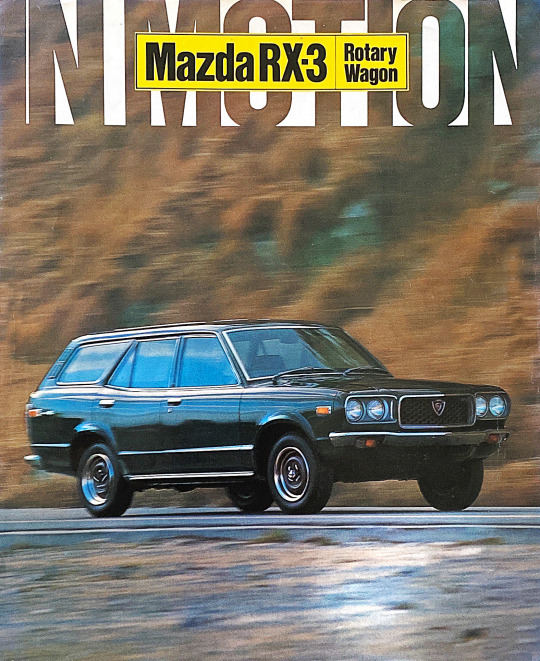
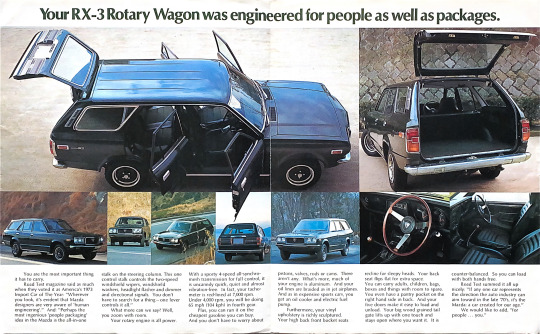

Mazda RX-3 Wagon brochure, 1971.
#Mazda#Mazda RX-3#Mazda RX-3 Wagon#Mazda Savanna#Rotary#Rotary engine#Mazda Rotary#twin rotor#rotary wagon#long roof#1971#1970s#brochure
374 notes
·
View notes
Photo
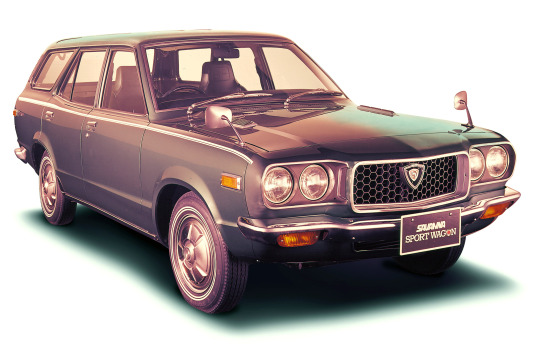
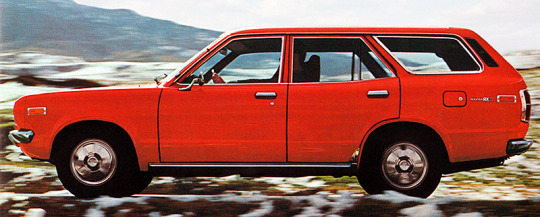

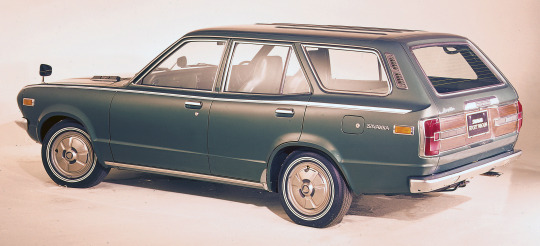
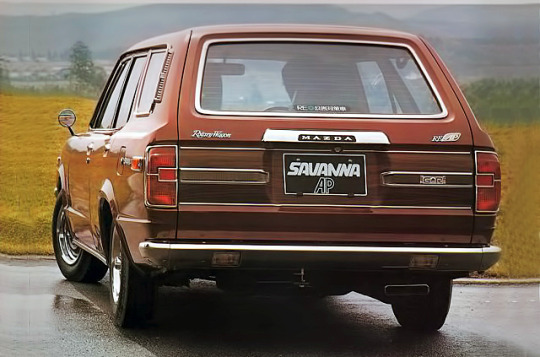
Mazda Savanna Sports Wagon, 1972. Sold internationally as the RX-3, the rotary-powered wagon was in production until 1978. It was not directly replaced as the Savanna name moved onto the RX-7 and Mazda never again marketed a compact rotary-powered wagon. Notice the car came equipped with an 8-track cassette player
#Mazda#Mazda Savanna#Mazda Savanna Sports Wagon#Mazda RX-3#sportwagon#mazda rotary#rotary engine#1972#1970s#long roof#eight track#Rotary Wagon
159 notes
·
View notes
Photo

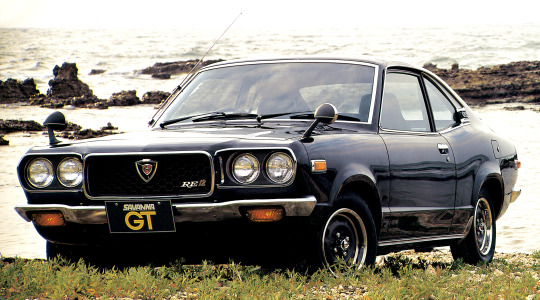


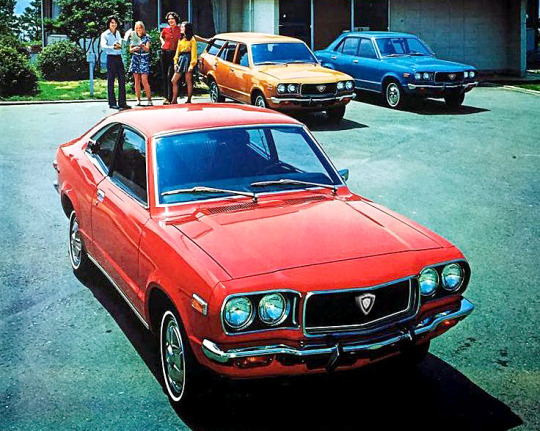
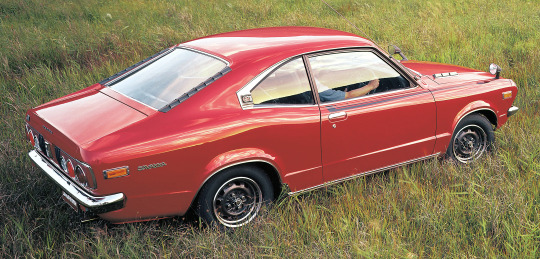
Mazda Savanna/RX-3, 1972. Mike Whiddett described the RX-3 as “my favourite car of all time”. It was a compact, rotary-engined model range available as a GT coupé, saloon or sport wagon. The 1972 RX-3 was the world’s first rotary-powered station wagon. Prior to the RX-7 the RX-3 was Mazda’s most popular rotary engined car and, unusually for most model ranges, the GT coupé was the most popular variant with 50% of all RX-3 sales. It remained in production until 1978 and was succeeded by the RX-7, Mazda having been encouraged by the success of coupé model
154 notes
·
View notes